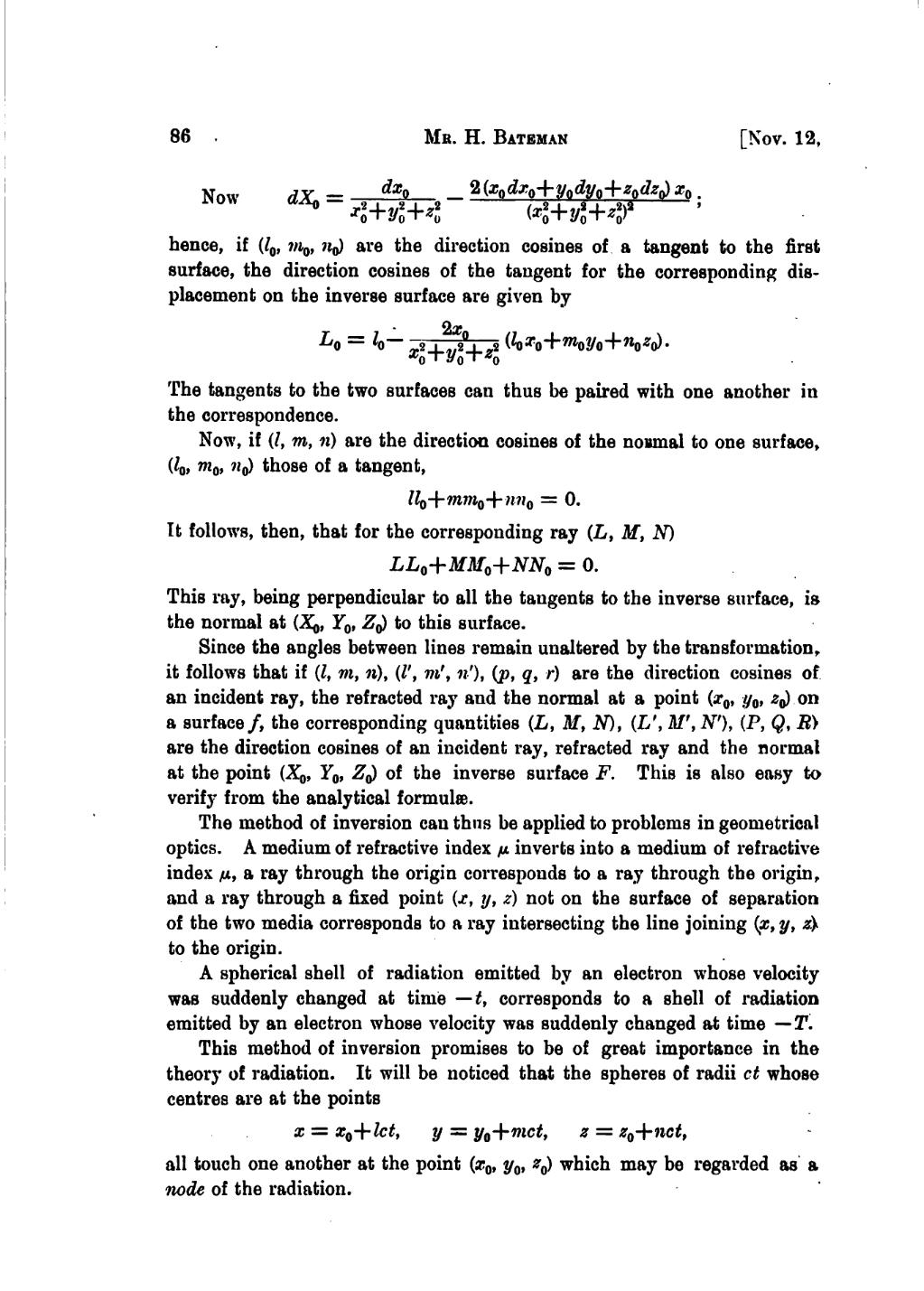Now
hence, if are the direction cosines of a tangent to the first surface, the direction cosines of the tangent for the corresponding displacement on the inverse surface are given by
The tangents to the two surfaces can thus be paired with one another in the correspondence.
Now, if (l, m, n) are the direction cosines of the normal to one surface, those of a tangent,
It follows, then, that for the corresponding ray (L, M, N)
This ray, being perpendicular to all the tangents to the inverse surface, is the normal at to this surface.
Since the angles between lines remain unaltered by the transformation, it follows that if (l, m, n), (l', m', n'), (p, q, r) are the direction cosines of an incident ray, the refracted ray and the normal at a point on a surface f, the corresponding quantities (L, M, N), (L', M', N'), (P, Q, R) are the direction cosines of an incident ray, refracted ray and the normal at the point of the inverse surface F. This is also easy to verify from the analytical formulæ.
The method of inversion can thus be applied to problems in geometrical optics. A medium of refractive index μ inverts into a medium of refractive index μ, a ray through the origin corresponds to a ray through the origin, and a ray through a fixed point (x, y, z) not on the surface of separation of the two media corresponds to a ray intersecting the line joining (x, y, z) to the origin.
A spherical shell of radiation emitted by an electron whose velocity was suddenly changed at time -t, corresponds to a shell of radiation emitted by an electron whose velocity was suddenly changed at time -T.
This method of inversion promises to be of great importance in the theory of radiation. It will be noticed that the spheres of radii ct whose centres are at the points
all touch one another at the point which may be regarded as a node of the radiation.








